WHAT IS YOUR OPINION? Let us know in the comment section below.
Prof. Leon Hugo
University of Pretoria
and
Jean Hugo
Tshwane University of Technology
The National Development Plan (NDP) envisions the conversion of underutilised land in communal areas and land reform projects into commercial production. Currently, approximately 10% of agricultural output is produced by previously disadvantaged farmers, without adequate training and assistance, implying that the sector has potential and is growing, and is gradually improving on inclusivity. The minister of Agriculture, John Steenhuisen, reported: “We must advance commercial agriculture while supporting small-scale farmers” (John Steenhuisen), stressing the role of government in creating an enabling environment for all levels of agriculture.
Following the initial hunter-gatherer phase of civilization, agriculture emerged as the primary human occupation. With the advent of the agricultural revolution and subsequent industrial revolution, technology became an integral part of agricultural production systems. In most developed regions of the world, agriculture is thus increasingly reliant on modern technology.

Photo: Modern farming employs advanced technology.
The Daily Maverick reported on 21 August 2021: “Whether it be flying electrically charged drones to make it rain or releasing sulphur dioxides into the atmosphere to reflect sunlight, (we) are increasingly looking to geo-engineering technologies and techniques to save humanity from the worst impacts of the climate crisis”. (Van Diemen).
Click on the Title to see our Blog article:
.
Modern farming has led to significant soil degradation due to excessive tillage by ultra-heavy machinery, compacting the topsoil. Monocropping has reduced soil fertility and intensive agriculture has contributed to loss of biodiversity. Expansion of agricultural land leads to clearance of large tracts of indigenous vegetation, contributing to loss of habitats. Dependence on chemical inputs has also led to the development of pesticide-resistant pests and negatively impacted human health through exposure to harmful chemicals. The heavy use of synthetic fertilizers and pesticides has polluted waterways and harmed aquatic ecosystems.
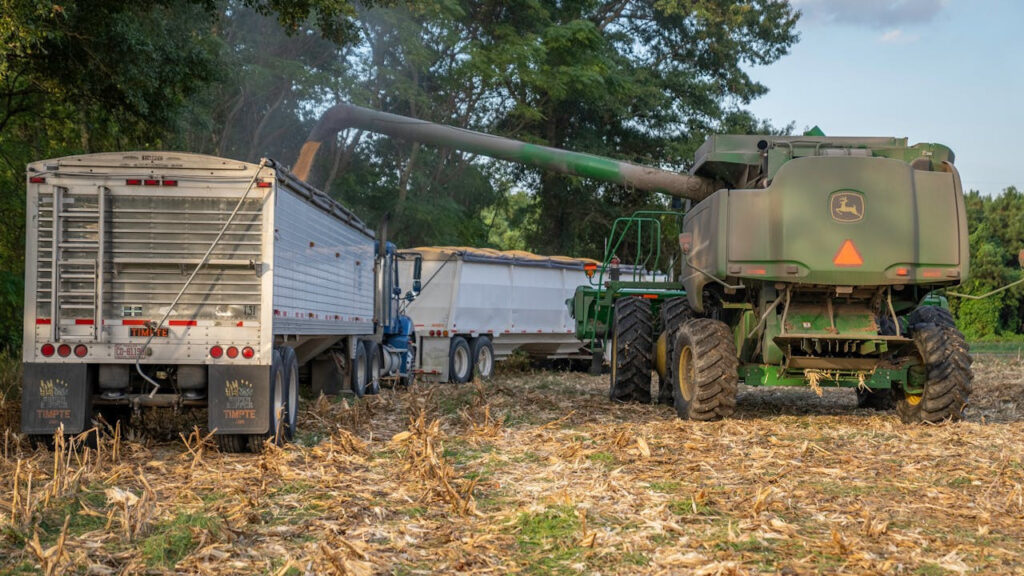
Photo: Heavy machinery compacts topsoil.

Photo: Greenhouse gas emissions exacerbate climate change.
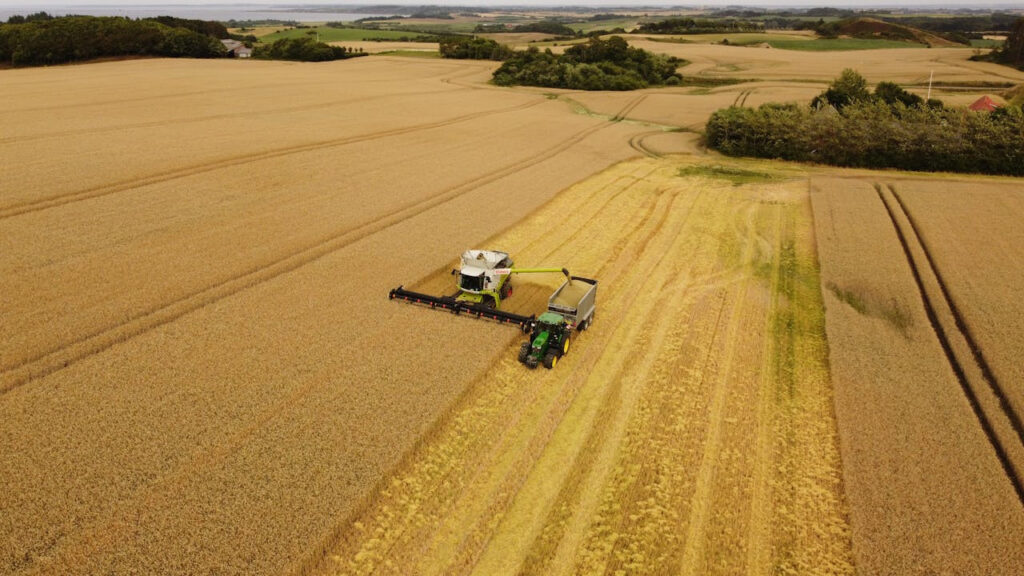
Photo: Monocropping reduces soil fertility.
Increased greenhouse gas emissions have led to air pollution and the exacerbation of climate change. As result of these and other negative impacts, soil loses natural fertility. Poorer production leads to more fertilizers needed. To continue to ensure food security, the potential of the soil must be artificially boosted – a downward feedback system. Other socio-economic negative trends that follow on the heels of industrialized farming methods are the reduced need for labour due to mechanization, leading to loss of jobs and income, rural depopulation, and the decline of rural communities, disrupting social life.
This hugely impacts on age-old food production methods that are becoming even more inadequate due to erratic weather patterns like extreme heat, prolonged droughts and flash floods in recent years. These factors collectively threaten long-term agricultural sustainability, social cohesion, and environmental health. Truly an unsustainable situation.
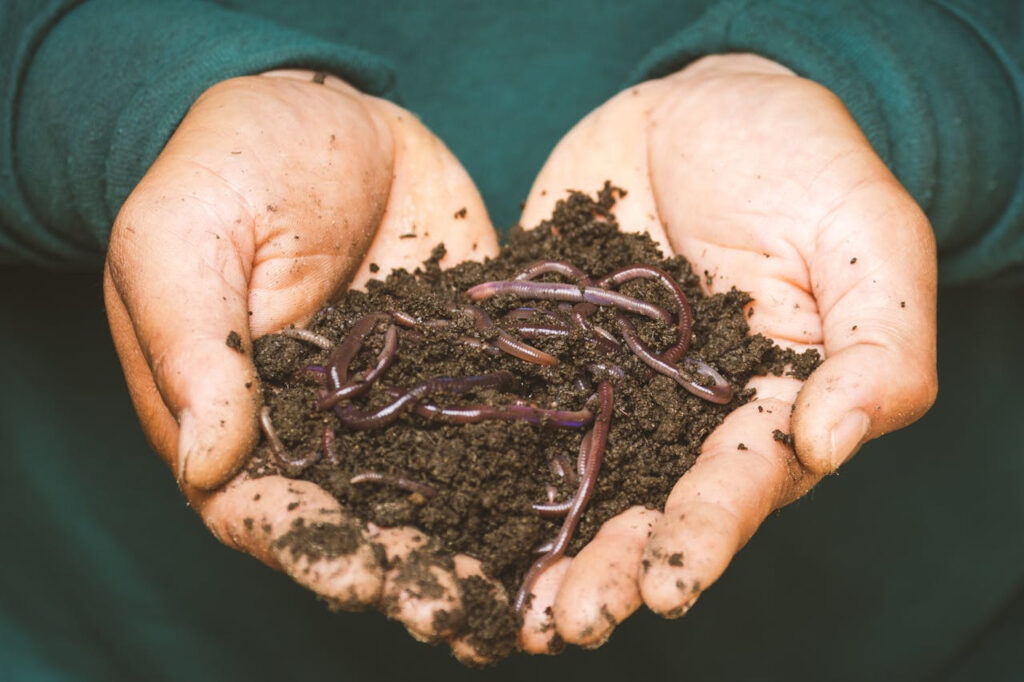
Photo: Nature allows for a inter-dependant relationship between organic material (earthworms) and inorganic material (soil).
There is a strong movement globally to move away from large scale intensive techno-farming practices back to local-scale environmentally friendly approaches, based on restoration of the quality of the natural resource base. Several eco-friendly farming endeavours, each having its special characteristics and farming techniques, developed over the past decades.
The terminology used for these initiatives varies. Terms to describe them include conservation farming, permaculture, organic farming, integrated organic farming, regenerative farming, sustainable farming, holistic farming, deep bed farming, and more.
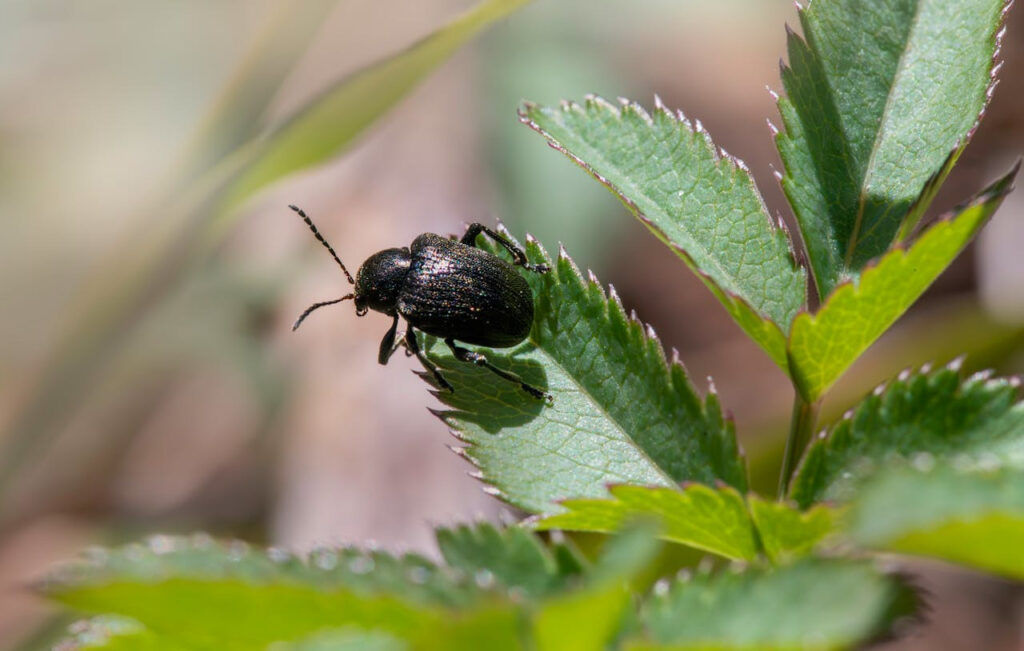
Photo: Pesticide indiscriminately kills off not only target pests but also other beneficial forms of life.
The definition of each differs but all of them have the following in mind: it conserves land, water, plant and animal genetic resources, is environmentally non-degrading, technically appropriate, economically viable, and socially acceptable.
Regenerative farming is an over-arching term; a concept integrating most of the preceding mentioned ecofriendly approaches. It is a system of farming principles and practices that increases biodiversity, enriches soils, improves watersheds, and enhances ecosystem services. Regenerative agriculture aims to capture carbon from the atmosphere, and in soil, and above-ground biomass, reversing current global trends of atmospheric accumulation. It tries to revert to ancient farming methods where animals roamed the land, foraging and depositing manure, thus building up the soil. Retaining all water flow by various means such as ditches, retaining walls, dams, mulching, etc., is ingrained into the concept of regenerative agriculture – preventing erosion, increasing ground water supply, and keeping all (non-crop) vegetation matter for use as mulching.
Photo: What is Regenerative Agriculture?
Regenerative agriculture is about working with nature’s natural cycles to provide nutritious food with a low environmental footprint. The regenerative concept places the focus on replacing nutrients lost to inevitable offtake (as food, fibre, or fuel) from natural sources. Many desert environments are nowadays being turned into productive land in this way.
There are 10 basic principles involved:
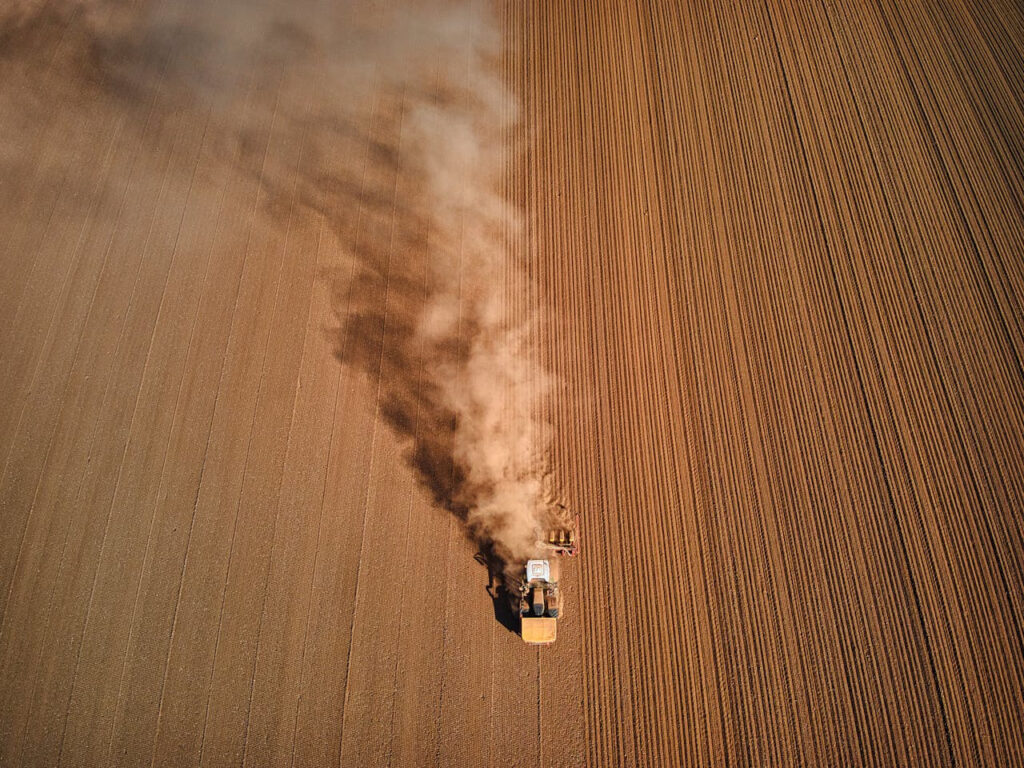
Photo: Soil structure should not be disturbed
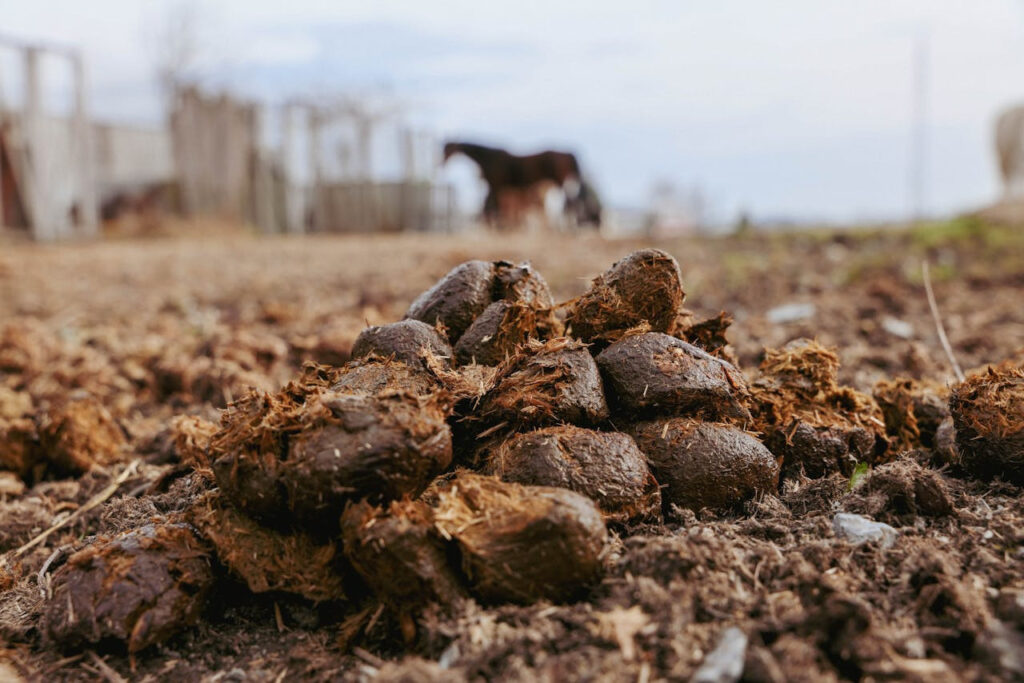
Photo: Excrement can be used as fertilizer
Retain soil productivity. Soil is the basis of food production. The basic aim is the conservation of life-giving soil. Avoid soil disturbance through heavy machinery tillage and thus keep organic ingredients of the soil in a healthy state of biodiversity.
Stay organic. Use limited chemicals, fertilizers, and insecticides thus reducing cost of production. Apply principle of biodynamics whereby cow dung and other excrement is used as fertilizer.
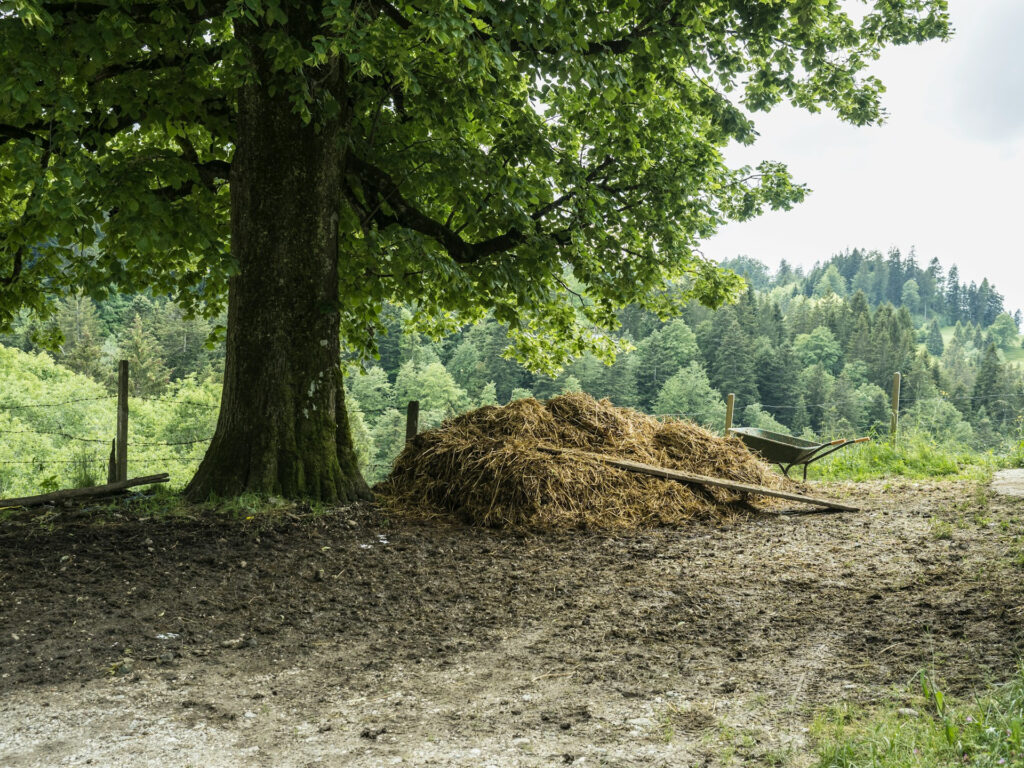
Photo: Waste material should not simply be removed but rather be gathered together to be re-used to stimulate new growth.

Photo: Dr Alan Savory has spent decades restoring degraded soil by moving herds of cattle fom one camp to the other to allow for natural fertilization an periods of recovery.
Design with Nature. Select farming practices according to soil, climatic and topographic conditions thus minimizing costly input of added irrigation and contouring.
Intensive grazing by rotating grazing plots. The current grazing strategy is to take cattle off the land as soon as overgrazing starts to develop. This is a departure from the normal methods of grazing land management by reverting to the ancient ecological way in which Nature operated. Herds of game used to graze an area intensively and then moved on, letting the grass recover before the next round of grazing.
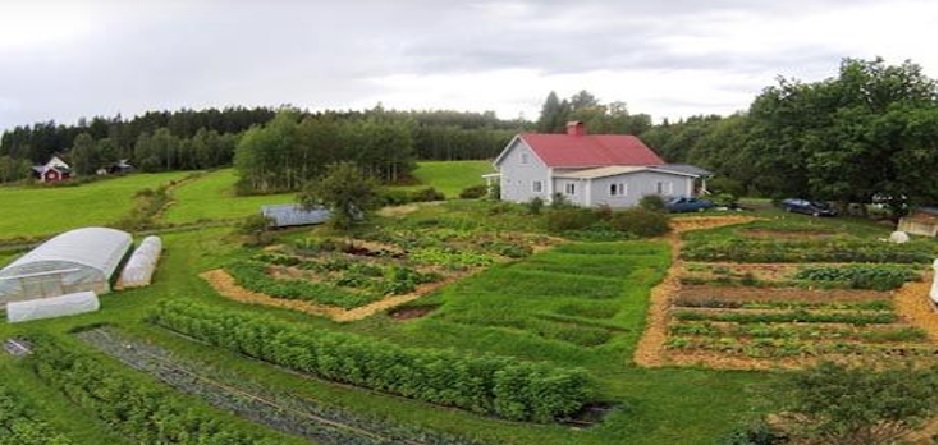
Photo: A self-sustainable homestead: “Small is beautiful”.

Photo: Variety of crops and animals support biodiversity.
Recycling of all materials and waste. Apply principle of recycling, re-use, reduce.
Diversification. Combining animal grazing, poultry, sheep, pigs, and various types of crops.
“Keep and Use what you have”. Keep vegetation cover, biodiversity, and soil by retaining rainwater downflow.
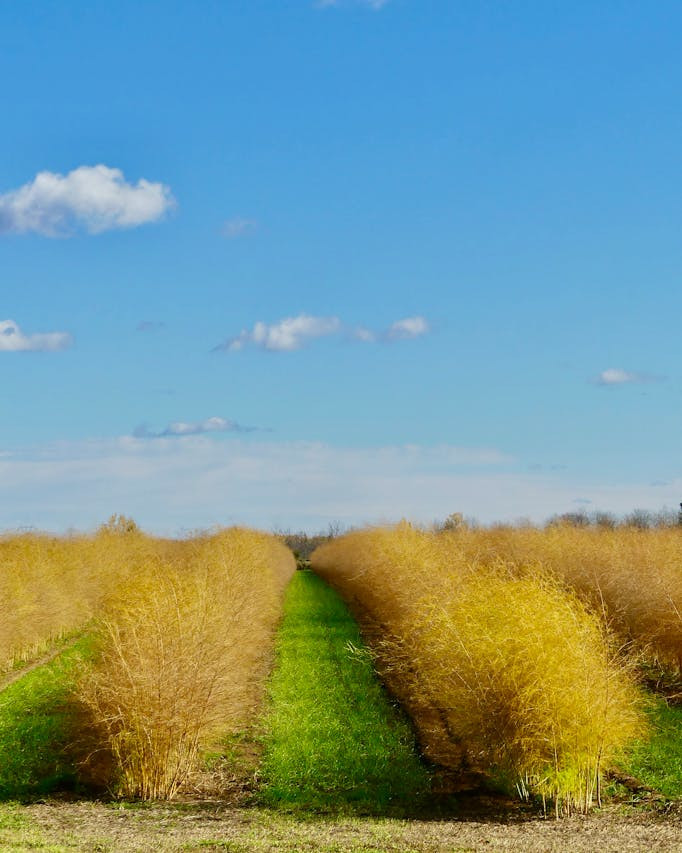
Photo: The practice of ‘Intercropping’ keeps the ground covered protecting micro organisms in the soil.

Photo: Covering the soil with cuttings or other dry material also protexts micro organisms in the soil from extreme heat.
Intercropping. The companion planting method of growing one crop alongside another. The purpose behind intercropping is to increase yields by doubling up on available growing space. It also creates biodiversity, which attracts a variety of beneficial and predatory insects.
Prohibit soils exposure by keeping soil covered with growing crops/grass. Make use of “cover crops” (plants grown between the main cash crops) after commercial crops have been harvested; thus, increasing water infiltration. Growing crops extract CO2 emitted into the atmosphere and act as bio-sequestration of CO2 thus minimize pollution.
Economy of scale. Farming at appropriate level. Keep farming at small local scale, in harmony and assisted by, existing traditional knowledge and expertise as well as local available labour, tools and machinery; and markets. “Small is beautiful” instead of “Bigger is better.”
Photo: Self-sustainable endeavours enable communities to become independent.

In advanced stadia of regenerative farming the generation of own power by way of biogas, solar, and wind, is to be integrated into the system. To include grazing effectively the integration of various smallholdings needs to be made. Contrary to the integrated reality portrayed to us in Nature, modern crops and grazing farming have developed into two separate specialized agricultural systems.
There is a need to integrate crop production and grazing and thus functions in a circular open system – the one supplementing the other. For example, the soil is the growing medium for the grass on the land which feeds the cattle whose dung in return feed the soil, enabling it to continue supplying necessary nutrients for the grass on the land.
On the negative side regenerative agriculture needs to be aware of:
In advanced stadia of regenerative farming the generation of own power by way of biogas, solar, and wind, is to be integrated into the system.
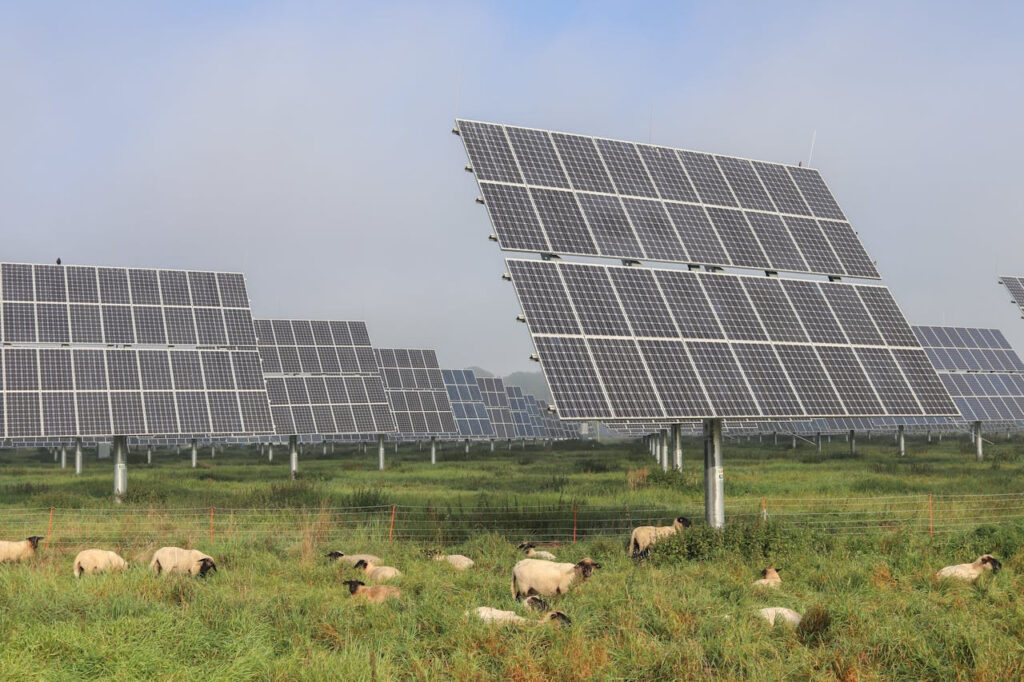
Photo: Sheep manure encourages grass seed to germinate and the shade from the solar panels provided protection for seedlings to survive the harsh sun.
Summary:
It is by no means implied that farming should become a political ballgame of land restitution to rectify the wrongs of the past. Regenerative small-scale farming is not to suddenly replace large-scale capital-intensive farming. South Africa still needs (and will in the future need) big farms to supply food for the growing urban population. Africans are moving to urban areas at the fastest pace the world has ever seen, with almost 1 billion people projected to be living in cities by 2050. To halt this process, one has to empower rural communities to become self-sufficient. The urgency to incorporate the rural population in the productive farming sector thus requires a new broad-based approach to farming. There should be a well-balanced gradual shifting from multi-million “dollar” farming enterprises, as being the only productive system, to a harmoniously integrated system where rural agricultural self-sufficiency plays an important role to ensure food security – on a sustainable basis.
How to communicate the principles of sustainable farming to the relevant landowners, in a pragmatic way, is of prime importance.
2 Responses
Good question, Jean. Even if small scale farming cannot save the global problem, every one successful farming enterprize will save one family/community.
Do we have enough time available for the transition to small-scale sustainable agriculture to effectively support monocultures